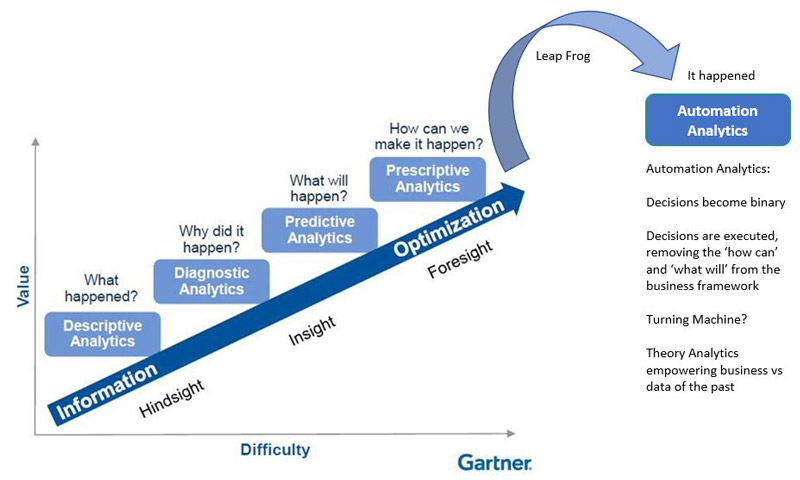I will dare not attempt to describe analytics or the wonderful work Gartner did in describing the analytics stack. Its been done very well by others.
I see a lot of articles about big data, machine learning and artificial intelligence.
One way to frame the two broad subject matters is to consider how they can be joined by extending the definition of prediction and prescription analytics to automation analytics. Even with prediction and prescription analytics, decisions are still held up by human decisions with no real defined framework at most organizations. It gets harder to execute using the frameworks of the past, so it’s time to think about how we consume data in or organizations.
With automation analytics, decisions are executed by machines, removing the ‘how can’ and ‘what will’ from the business framework. I am not sure how ‘human’ the questions will be or can be answered by the most confident of people. If these outcomes are any good, it will approach some of the earn Turning Test theories.
Clayton Christensen describes much of this as theories when predicting future outcomes. If the right framework is in place, this could be theory analytics? Maybe that name has a future. I know for sure, extending the old definitions of analytics into automation analytics will not work. They barely hold up in business today. For example: define your best customer segments according to current market share vs future state market share. Nope, have not seen it in too many places. Now do it in real time as the frames of business change? Time, place, product, pricing.
As leading edge organizations approach prediction and prescription the very best, the ones who leap off the page (uber, Airbnb, Amazon) will go even faster, more boldly.

